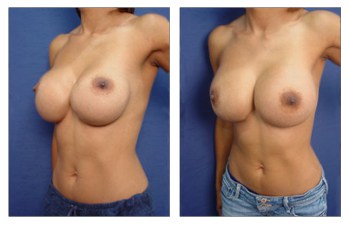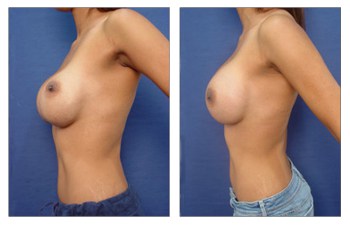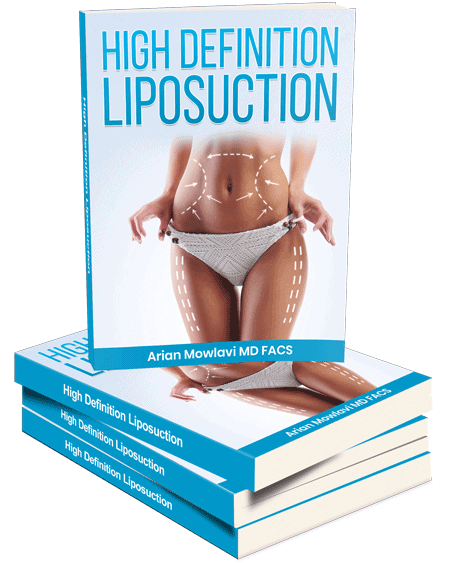A 41-year-old female patient demonstrates successful treatment of bottoming out after breast augmentation.
Bottoming out of the breasts describes an undesirable increase of the lower breast pole prominence that results following breast augmentation or breast lift with implant augmentation. Bottoming out is characterized by stretching of the lower breast skin and shifting of the breast implant into the lower breast pole with the resultant superior pointing of the nipple and areola as well as the loss of upper breast pole prominence.
Bottoming out can occur not only following breast augmentation but also following breast augmentation with an implant and simultaneous lift. Treatment of bottoming out following breast augmentation can only be provided following consideration of the causes of bottoming out.
Several causes of bottoming out have been identified and these can be divided into early versus late bottoming out. The early bottoming out occurs within six months and is related to surgical error. The most common cause of bottoming out is using an implant that is too large which stretches out the skin and soft tissues of the lower breast pole. This is why appropriate implant selection is so critical when it comes to breast implant augmentation.
The other cause of early bottoming out is the inappropriate release of the inframammary crease. This may be attempted by novice surgeons who are trying to accommodate a larger implant that will fit in the breasts. Unfortunately, the breast implant is intimately supported by this crease and any violation of this crease will result in bottoming out.
Another subset of patients who undergo a simultaneous breast lift with implant augmentation will observe bottoming out if the surgeon does not re-establish the inframammary crease supportive ligaments when repairing the lower horizontal incision line. This will occur when the stitching of the inferior horizontal line does not incorporate the deeper fascial layer.
The most common cause of late bottoming out involves stretching of the lower breast skin that occurs from poor elastin composition of the skin. This is mostly related to your genetics and cannot be altered. Propensity of stretchy skin can sometimes be identified preoperatively making you surgeon more apt to tighten your lower breast skin during a lift or choosing a smaller implant.
If your skin has always felt stretchy, then you may be prone to this side effect. Another consideration of stretchy skin involves that fact that as we get older, our elastin skin density is decreased. In fact, all elastin is lost by the time you are 45 years of age.
Treatment of bottoming out following breast augmentation requires several maneuvers. Your breast augmentation revision will require several considerations. This typically includes a wedge excision of your lower breast pole in order to decrease the length of your lower breast pole and eliminate lower breast pole fullness. Another consideration is choosing a smaller implant that is going to decrease the weight on your lower breast pole.
A final consideration involves re-establishing your inframammary crease if it has been violated or to reinforce the crease if the lower horizontal incision has not been appropriately repaired using deeper stitches. If you are interested in the treatment of bottoming out following breast augmentation, we encourage you to make a consultation with Our Surgical Team.







